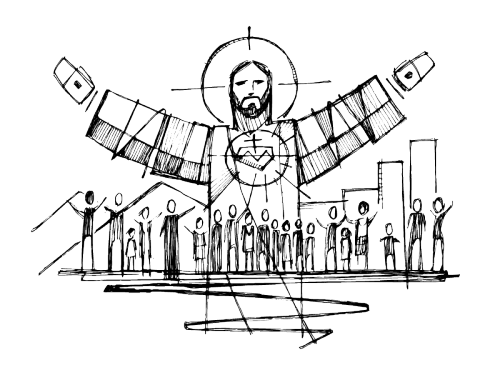Learning to do better at seeing God in strangers
By Chip Hardwick | Presbyterians Today
 John 20:1–18 is a lectionary option for Easter Sunday, April 1, 2018.
John 20:1–18 is a lectionary option for Easter Sunday, April 1, 2018.
I was once in charge of logistics for an important meeting at an international airport. Since VIPs were flying in from all around the world, I wanted to make sure that everything was set up perfectly. I dutifully went to the conference room a couple of hours early and found, to my surprise, several strangers camped out.
With all the confidence and indignation that my 28-year-old self could muster, I marched into the room and told these squatters — the much-older gentlemen there — that they would need to leave because I had the room reserved. One of the men asked me why. I said, “For a meeting I’m coordinating for Company X.” Fighting to suppress a smirk, he said, “I’m the CEO of Company X.”
Jesus was probably a little more patient when Mary mixed him up with a gardener in John 20:1–18. Mary had become distraught when she saw the stone to the tomb rolled away. She looked inside and saw two angels, who asked why she was weeping. She replied, “They have taken away my Lord, and I do not know where they have laid him.”
Mary then saw Jesus, but she no more recognized him than I did the CEO of Company X. Both Mary and I were mistaken. We not only missed seeing the CEO or Jesus, but we also looked down on the person before us. I just needed the squatter to get out of the room as soon as possible. I was not concerned about whether he might have been holding a meeting just as important to him as mine was to me. Mary just wanted the gardener to tell her what he had done with Jesus. She didn’t ask him if his life had been turned as upside down as hers.
And yet Mary’s “just the gardener” is in fact the Christ who humbled himself on the cross and who calls us to honor everyone around us, even when we think they are not as important as those we are seeking. Jesus opens our eyes to the worth of everyone by speaking to us not with a smirk but with a smile, as he did to Mary.
My high school friend Karen taught me how much we can learn when we honor people who seem less important than we are. Karen visited Mrs. Webster in a nursing home a few times each week. They would talk, despite Mrs. Webster’s constant cough, which made it difficult to hold a conversation. They would walk, even though Mrs. Webster could rarely go more than a few steps without tiring. They would sit together, even though sometimes it was mostly in silence.
At first Karen didn’t understand why her mom had encouraged these visits. Why waste time with someone so clearly on the decline when there were band practices to attend and homework to complete? Surely these were much more important for getting into college than visiting Mrs. Webster.
But week by week and month by month, Mrs. Webster spoke Karen’s name. Sometimes with great difficulty, in between coughing fits and wheezing spells. As Karen heard her name from Mrs. Webster, she realized she was hearing it from Jesus. She heard it like Mary Magdalene had heard her own name, reminding her that Jesus was no longer in the tomb. She heard it, realizing that gardeners are much more important than we think. She heard it, remembering that after the resurrection there is neither slave nor free, neither male nor female, for all of us are one in Christ Jesus.
Who are the squatters, the gardeners, the Mrs. Websters speaking to us today? Who are the people reminding us of the message of Easter, that Christ is risen and often standing right in front of us?
Chip Hardwick is interim pastor at First Presbyterian Church of Lake Forest, Illinois. He is the former director of Theology, Formation & Evangelism for the PC(USA).
Discussion Questions
• Who have you recently overlooked in a meeting or Bible study or taken for granted in your community?
• How is God speaking to you in a stranger who stands before you?
• How can we become better at seeing Christ in one another?
![]() You may freely reuse and distribute this article in its entirety for non-commercial purposes in any medium. Please include author attribution, photography credits, and a link to the original article. This work is licensed under a Creative Commons Attribution-NonCommercial-NoDeratives 4.0 International License.
You may freely reuse and distribute this article in its entirety for non-commercial purposes in any medium. Please include author attribution, photography credits, and a link to the original article. This work is licensed under a Creative Commons Attribution-NonCommercial-NoDeratives 4.0 International License.
Categories: Presbyterians Today
Tags: bible, bible explorations, recognizing jesus, welcoming the stranger
Ministries: Presbyterians Today